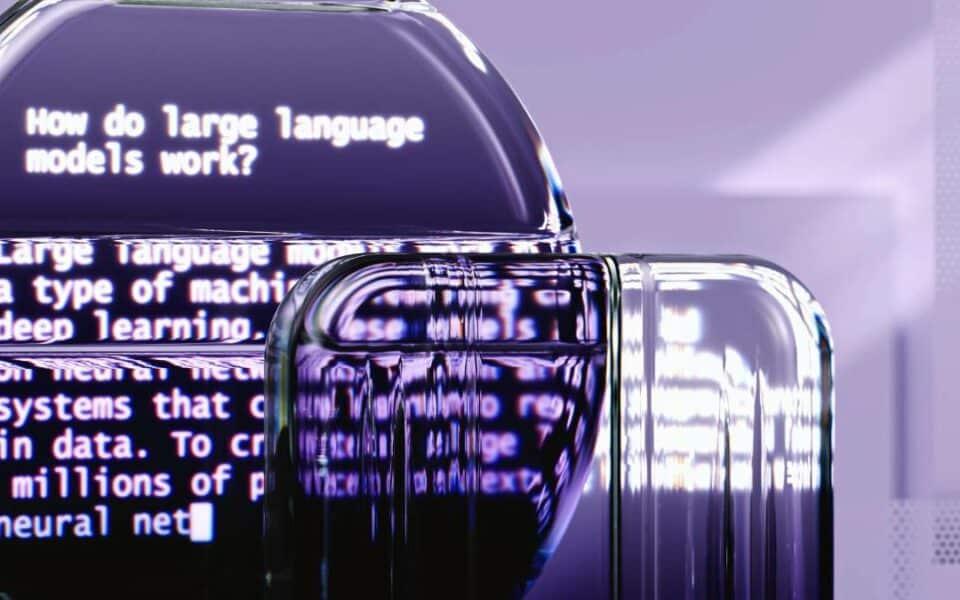
Synthetic Data and Digital Twins: A Practical Playbook for Enterprise AI
24 October 2025
How to Optimize Your Content for AI Answer Engines like ChatGPT and Gemini
30 October 2025
Introduction
The emergence of artificial intelligence has led to the rise of a new paradigm in software development: Vibe Coding. This approach, characterized by collaboration between human developers and AI-driven tools, stands in contrast to the traditional rule-based coding process. In this article, we present a deep technical comparison of these two models, evaluating their workflows, output quality, scalability, risks, and future outlook.
What is Traditional Coding?
Rule-Based Development Philosophy
Traditional coding relies on clearly defined rules and structured instructions. Developers explicitly design algorithms, define control flows, and handle edge cases. Every aspect of the system is constructed step-by-step, allowing for precise behavior and maximum transparency.
Strengths of Classic Workflows
This hands-on approach offers strong advantages: full code ownership, fine-grained control, and traceability. Traditional methods are often essential for regulated industries, mission-critical systems, and projects requiring detailed documentation, strict performance metrics, or compliance certifications.
Bottlenecks in Manual Code Creation
Despite its strengths, manual coding can become a bottleneck. Developers must repeat boilerplate patterns, test every flow manually, and maintain consistency across large codebases. As projects scale, the time and resources required to maintain traditional workflows can grow exponentially.
Understanding Vibe Coding (AI-Enhanced Development)
What Makes Vibe Coding Different?
Vibe Coding revolutionizes development by shifting focus from how code is written to what needs to be achieved. Instead of building logic line-by-line, developers describe goals, and AI tools generate code suggestions based on contextual understanding. This enables experimentation, parallelization, and rapid prototyping.
Underlying Technology: LLMs and Machine Learning
Large language models (LLMs), trained on millions of code examples, are at the core of Vibe Coding tools. These models are capable of parsing incomplete instructions and inferring intent. They draw on learned patterns to produce syntactically and semantically correct code, often in real-time.
Tools that Enable Vibe Coding
Prominent tools such as GitHub Copilot, Codespell AI, Replit Ghostwriter, and Kodezi exemplify Vibe Coding in action. These tools integrate seamlessly with development environments and assist with syntax completion, code refactoring, error detection, and even documentation generation.
Workflow Comparison
Planning and Implementation
In traditional development, planning and implementation are tightly coupled and sequential. In contrast, Vibe Coding allows developers to continuously refine their solutions. With AI tools, implementation can begin before full architectural planning is finalized, which supports iterative product discovery.
Control and Flexibility
Traditional coding offers deterministic control but is less adaptable to change. Vibe Coding introduces probabilistic behavior – developers give up some precision in exchange for flexibility and speed. This requires teams to adopt review and governance structures to maintain quality.
Iteration Cycles
Vibe Coding shortens feedback loops dramatically. Developers can issue prompts, receive code suggestions, test immediately, and adjust inputs – all within minutes. This stands in contrast to traditional iteration cycles, which often require full code review processes and staged testing environments.
Collaboration Models
Classic workflows assign developers to narrow roles. Vibe Coding encourages a more fluid collaboration where developers, designers, and testers interact with shared AI tools. The division between design, coding, and debugging begins to blur, fostering more agile teamwork.
Output Quality and Reliability
Clean Code Standards
AI-generated code can be efficient and innovative, but it often requires normalization to align with team style guides. Automated linters and human review processes are critical to maintain consistent naming, formatting, and architecture across projects.
AI Bias and Inherited Errors
AI models learn from publicly available code, which may include bad practices or outdated patterns. These inherited flaws can propagate into new projects if not detected. Rigorous validation and continuous training of LLMs on curated repositories can help mitigate this.
Long-Term Maintainability
While AI speeds up development, it can introduce technical debt if code is not adequately documented or if architectural decisions are implicit. Maintaining such systems requires clear version control, unit tests, and developer awareness of AI limitations.
Development Speed and Scaling
Time-to-Prototype and Deployment
Vibe Coding excels in speed. Features that once required several sprints can now be prototyped in hours. This empowers startups and R&D teams to validate concepts faster, reduce time-to-market, and pivot with agility.
Task Automation and Delegation
Repetitive tasks such as creating data models, testing APIs, and configuring environments can be handled by AI agents. This liberates developer focus for creative and complex logic design.
Cost Efficiency in Scaling Up
Organizations adopting Vibe Coding can scale output without proportional increases in team size. However, cost savings are balanced by the need for AI tool subscriptions, model hosting infrastructure, and AI governance practices.
Security and Risk Management
Known Unknowns in Vibe Coding
AI models may produce code that functions but lacks secure handling of edge cases or fails under specific inputs. Because models operate without understanding business context, oversight is crucial to prevent vulnerabilities from slipping through.
Testing Strategies for AI Code
Beyond standard unit and integration tests, Vibe Coding requires prompt-based testing – validating that generated code aligns with input intent. Techniques such as sandbox testing, fuzzing, and static analysis are vital.
Compliance and Liability Questions
The legal landscape around AI-generated code is still evolving. Companies must assess whether generated code complies with licenses and data privacy laws. Liability frameworks for AI-driven bugs are not yet fully standardized, requiring proactive legal policies.
Practical Applications of Vibe Coding
Real-Time Pair Programming
AI can serve as an intelligent assistant during development, suggesting next steps, completing partial functions, or offering alternatives. This improves developer productivity and confidence, especially among junior engineers.
Generative Component Design
Entire components – from front-end interfaces to backend APIs – can be scaffolded using Vibe Coding. This accelerates full-stack development and enables small teams to deliver end-to-end solutions rapidly.
Code Review and Optimization
Vibe Coding tools can highlight inefficient algorithms, propose refactorings, and optimize queries or loops for performance. These insights augment code reviews and complement traditional performance audits.
When to Choose Which Approach?
Strengths of Vibe Coding for Startups and MVPs
For lean teams and fast iteration cycles, Vibe Coding delivers unmatched velocity. It’s ideal for MVPs, internal tools, and proof-of-concept systems where speed and flexibility outweigh structural perfection.
When Traditional Coding is Essential
Sectors like finance, healthcare, and aerospace demand stability, predictability, and transparency. In such cases, traditional coding – with its disciplined processes and detailed documentation – remains the gold standard.
Team Integration and Onboarding
How to Introduce AI Tools into Existing Workflows
Successful integration begins with pilot projects. Choose non-critical features, involve tech leads early, and create documentation on best practices. Ensure that AI tools work with your existing CI/CD and code quality pipelines.
Developer Mindset and Prompt Crafting
Prompt engineering is a core skill in Vibe Coding. Developers must learn to phrase requests clearly, structure constraints effectively, and iterate prompts to achieve desired results. Teams benefit from shared prompt libraries and training sessions.
Legal and Ethical Boundaries
Authorship and Licensing of AI Code
Ownership of AI-generated code is not always clear. Developers and companies should review the terms of use of AI tools and implement internal policies for attribution, reuse, and license compliance.
Risk Ownership in Generated Logic
If AI-generated code introduces defects, the question of accountability arises. To manage risk, teams should log AI interactions, document decisions, and include human sign-off on all production-level outputs.
Future of Software Engineering
Shifting Roles in Tech Teams
As AI takes on more coding responsibilities, human roles shift toward architecture, integration, and quality assurance. Engineers will act more as orchestrators and curators, managing complex systems of both human- and AI-generated components.
Human + AI Co-Development Models
The most effective development models will be hybrid. AI handles repetition and speed; humans provide oversight, strategic planning, and empathy-driven design. This synergy redefines productivity benchmarks.
Checklist for Integrating Vibe Coding Tools
- Confirm IDE support for chosen AI tool
- Train developers in prompt engineering and tool usage
- Establish code review guidelines for AI outputs
- Set up automated linting and test coverage reports
- Track usage, risks, and AI interaction logs
- Document generated code with clear authorship notes
Side-by-Side Comparison Table
| Feature | Vibe Coding (AI) | Traditional Coding |
| Time to Deliver | Rapid | Slower |
| Flexibility | High (Prompt-driven) | Medium |
| Code Control | Limited | Full |
| Output Consistency | Variable | High |
| Scaling Potential | High | Limited by team size |
| Security & Auditability | Requires additional review | Built-in |
| Licensing Clarity | Often ambiguous | Clear |
Conclusion
Vibe Coding introduces a transformative shift in software development. It enables higher speed, creative exploration, and rapid iteration, especially in environments focused on innovation. However, it must be deployed with discipline, oversight, and awareness of its limitations. Traditional coding continues to provide unmatched stability and control where it is most needed. The future belongs to organizations that blend both paradigms – leveraging the strengths of AI while upholding the craftsmanship of human engineering.


